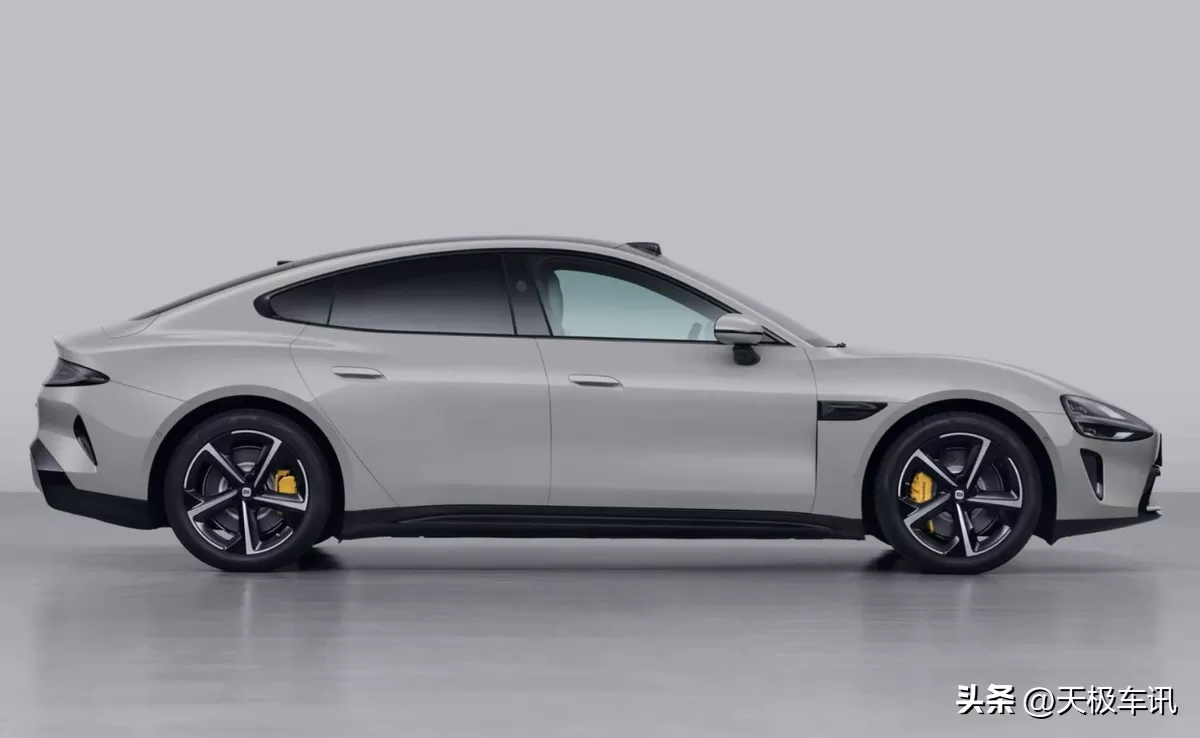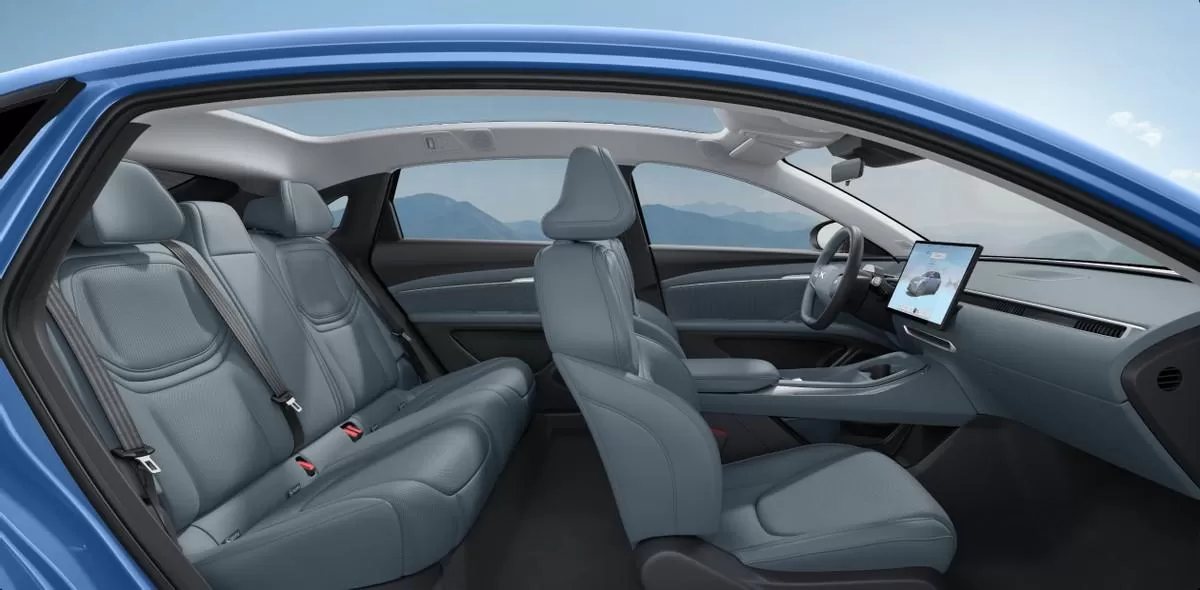Recently, Xiaomi's first new energy vehicle, the Xiaomi SU7. has been in the spotlight. Since the Ministry of Industry and Information Technology released real photos, and media leaked images of the new car, the official has openly revealed more details. Many users have even spotted the Xiaomi SU7 on the road. Rumor has it that Xiaomi will hold a launch event later this month. Before that, let’s delve into this first electric sports car for young people based on the available information.
Table of Contents
Xiaomi’s First All-Electric Sedan
The first photo of the Xiaomi SU7 was unveiled by the Ministry of Industry and Information Technology. The exterior resembles a blend of the Porsche Taycan and Tesla Model 3. with smooth lines that maintain a sporty feel.
The front end features a closed-off design with a grille for cooling the motor. Contrary to the popular trend of integrated headlights, the Xiaomi SU7 uses split headlights. The newly designed Xiaomi logo is placed at the front, along with a front camera likely used for 360° panoramic imaging.
In terms of size, the Xiaomi SU7 measures 4997mm in length and 1963mm in width, with height varying between 1440mm and 1455mm depending on the version. The wheelbase is 3000mm across all models, surpassing competitors like the Tesla Model 3. Zeekr 007. and Zhidou S7. and even larger than the Tesla Model S.

The 3-meter wheelbase provides ample interior space, enhancing the competitiveness of the new car. The SU7 features semi-concealed door handles similar to the Porsche Taycan, balancing aerodynamics and practicality. From the early spy shots, the Xiaomi SU7 appears to have frameless doors, contributing to a sleek design that aligns with current new energy vehicle aesthetics.
The Xiaomi SU7 offers several wheel options. The standard version uses 245/40 R20 tires front and rear, while the Max version features a staggered setup with 245/40 R20 front and 265/40 R20 rear tires. The standard version has different brake calipers, while the Max version boasts higher-spec Brembo calipers.
According to the Ministry of Industry and Information Technology, the Xiaomi SU7 will come with an electric spoiler, standard on the Max version, with three angle adjustments. The recently leaked video of the real Xiaomi SU7 also showed the spoiler in action.

The exposed images reveal that the new car will come in gray, green, and blue. Whether these colors will remain or expand upon official release is uncertain. Given Xiaomi's young target demographic, more vibrant and diverse color options are expected at launch.
Not much of the interior has been revealed, but filing information shows that the Xiaomi SU7 will at least feature white and red interior options, with a smart cockpit being a major highlight.
Comprehensive Core Configurations
The core configurations of the Xiaomi SU7 are almost fully exposed. The new car will support both 400V and 800V high-voltage platforms.
The 400V platform comes with a 73.6kWh LFP battery from Fudi Battery, with ranges of 628km and 668km, powered by a 220kW motor, and a top speed of 210km/h. The range differences stem from the wheel sizes. Compared to the 586km range of the XPeng P7's 71kWh battery and the 560km range of the NIO ET5's 75kWh battery, Xiaomi SU7 showcases superior battery optimization.
The 800V high-voltage platform uses a 101kWh ternary lithium battery from CATL, with ranges of 800km and 750km, dual motors providing 220kW and 275kW peak power for front and rear respectively, and a top speed of 265km/h. The range differences are again due to wheel sizes.

While the Zeekr 007 and Zhidou S7 offer longer ranges with 100kWh batteries, the Xiaomi SU7 distinguishes itself as the only dual-motor all-wheel-drive model achieving an 800km range with a 100kWh battery.
Smart Features as the Ultimate Trump Card
Huawei's "Smart Car Selection" model's success has proven the importance of intelligence in new energy vehicles. Xiaomi's strength lies in its ecosystem and intelligence. At the Xiaomi 14 series launch, Xiaomi introduced the Surge OS, which extends beyond smartphones to create a seamless "person-car-home" ecosystem, similar to Huawei’s HarmonyOS.
Xiaomi’s popular AI assistant Xiao Ai and its powerful IoT ecosystem will bring unique features to the Xiaomi car's smart functionalities. Xiaomi's commitment to creating an intelligent cockpit, unlike Meizu and Huawei's initial attempts, promises an unparalleled user experience.

Xiaomi’s "person-car-home ecosystem" integrates smart experiences across devices, building on the proven market success of mobile-car connectivity to offer more features. This is the most anticipated aspect of the Xiaomi SU7.
In terms of intelligent driving, Xiaomi acquired Deepmotion and demonstrated capabilities such as unprotected left turns, automatic U-turns, multi-lane left turns, roundabout navigation, pedestrian yielding, and automatic parking. These showcase Xiaomi's technical ability to support urban intelligent driving.
However, whether Xiaomi SU7 can meet mainstream industry standards remains to be seen, as developing advanced driver-assistance systems requires extensive resources and time to gather data and train models.
From the filing information, the Xiaomi SU7 Max will have LiDAR, while the standard version will not, but both will feature 12 ultrasonic sensors (6 front and 6 rear). Ultimately, the true capability of these systems will be revealed post-launch.
Conclusion
The performance of Xiaomi's first new energy vehicle upon release will significantly impact its ability to penetrate this market. Product strength is crucial. Xiaomi's inherent value-for-money proposition raises expectations for the SU7's final pricing, with some speculating it might replicate the disruptive pricing of Xiaomi smartphones, possibly launching at 199.900 yuan.
For the 400V version of the Xiaomi SU7. such a price would not be highly competitive in the intensely competitive new energy market. If Xiaomi dares to set a lower price to boost its presence, it might carve out a niche, though this could conflict with its high-end positioning.
According to Xiaomi founder Lei Jun, the Xiaomi SU7 will officially launch in the first half of 2024. Based on current summaries, the new car has the potential to make a significant impact on the new energy vehicle industry, but the extent of this impact remains to be seen.






